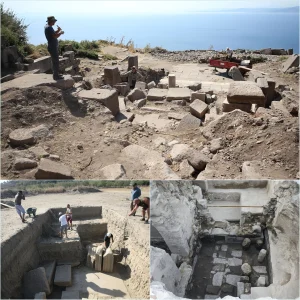A joint effort between Egyptian and American archaeologists has led to the significant discovery of the upper portion of a colossal statue of Ramses II, also known as Ramesses the Great, in Egypt’s Minya Governorate.

Ramesses II, a prominent ruler of the 19th Dynasty during Egypt’s New Kingdom period, is celebrated for his military conquests, architectural feats, and diplomatic skills. His reign, spanning from 1279 to 1213 BCE, is considered a pinnacle in Egyptian history. The newly unearthed limestone block stands impressively tall at 3.8 meters and depicts Ramses seated, adorned with a distinctive double crown and a headdress featuring a royal cobra. Hieroglyphic inscriptions on the upper part of the statue’s back column extol the king and his accomplishments.
The excavation site, Hermopolis Magna, formerly known as Khemnu in ancient Egypt and later as Hermopolis under Greek rule, held strategic importance as a regional capital known for religious worship and administrative activities.
Dr. Mustafa Waziri, Secretary-General of the Supreme Council of Antiquities, noted that this upper section complements the lower portion discovered by German archaeologist G. Roeder in the 1930s, further enriching our understanding of this monumental statue of Ramses II.





